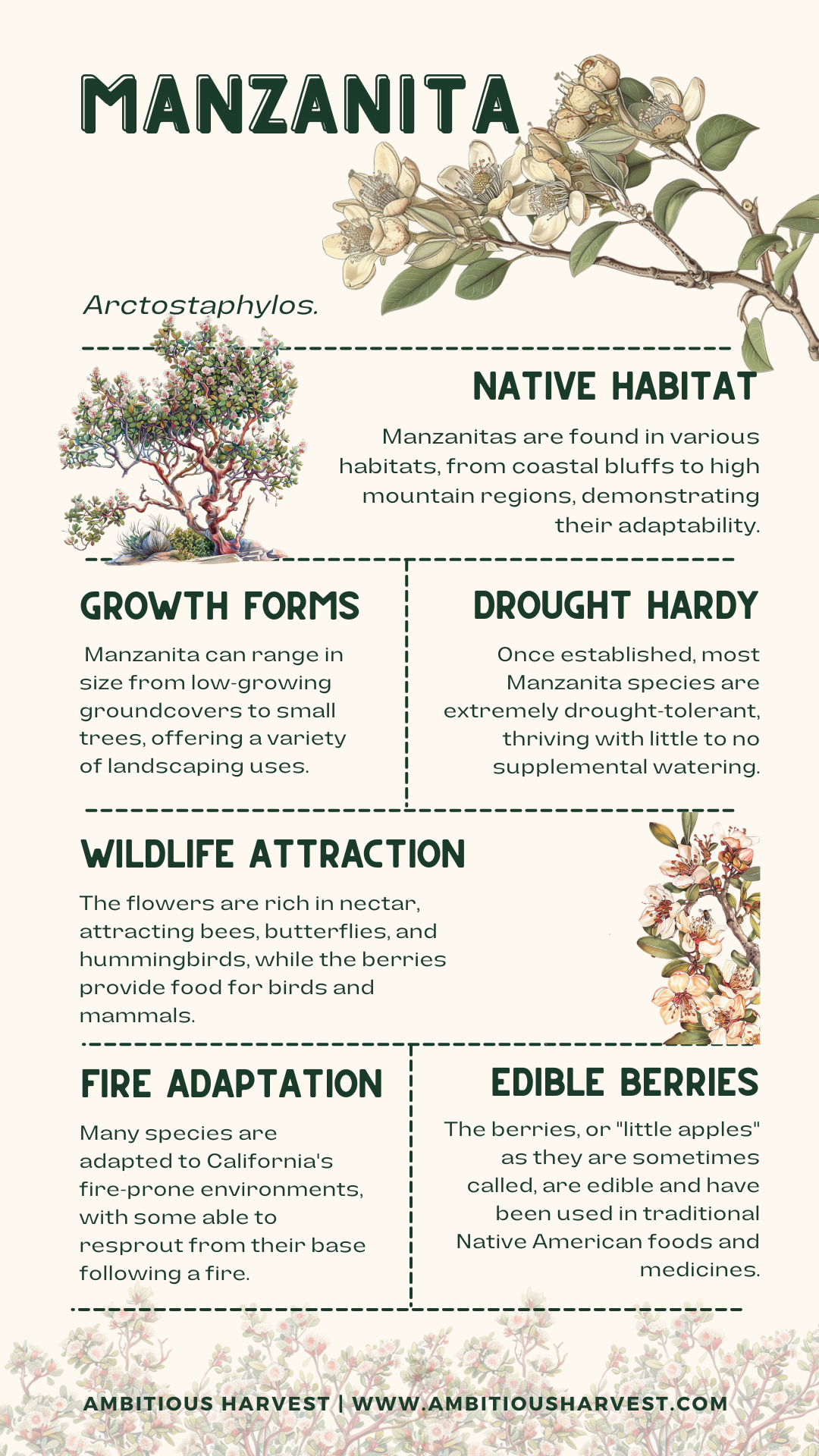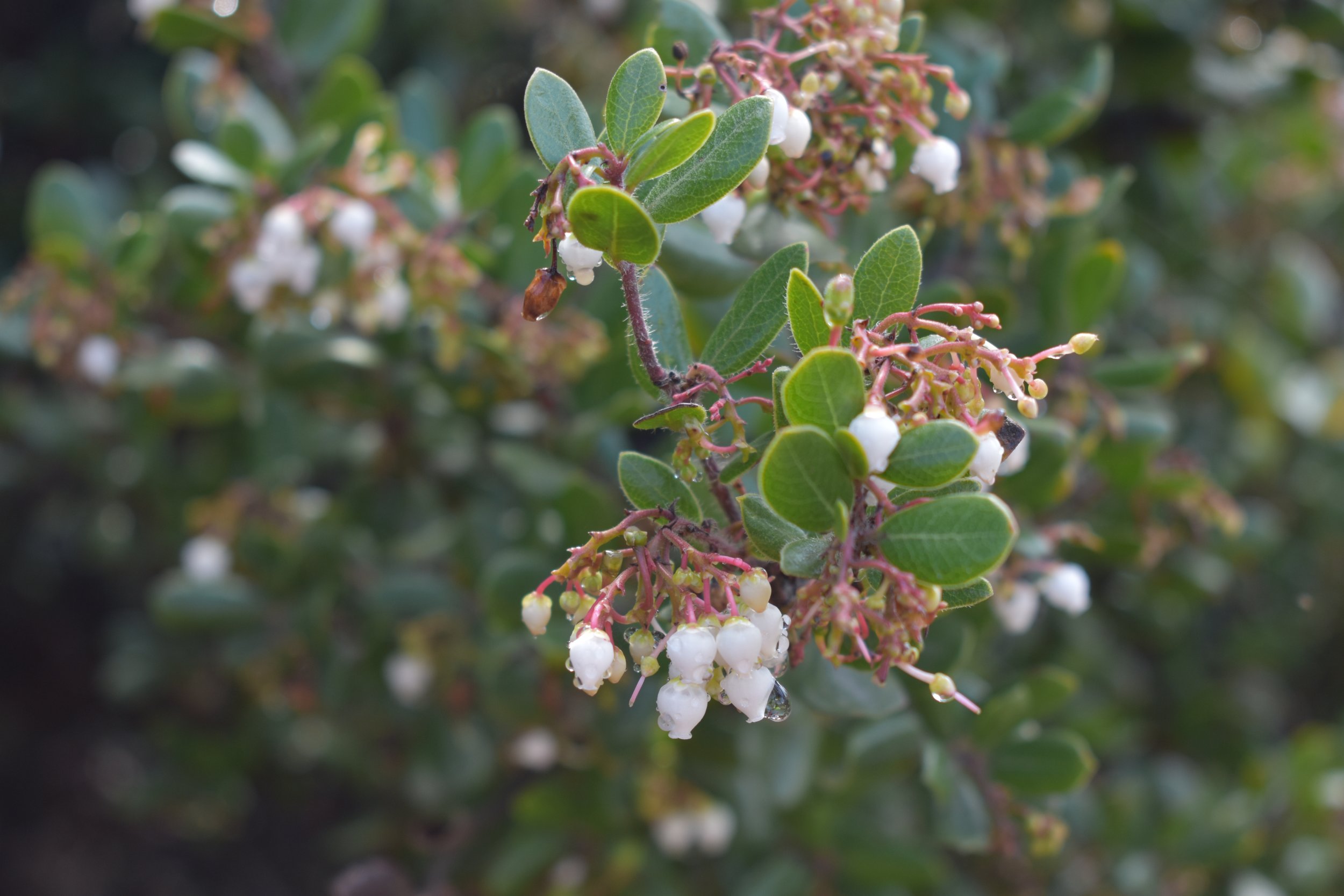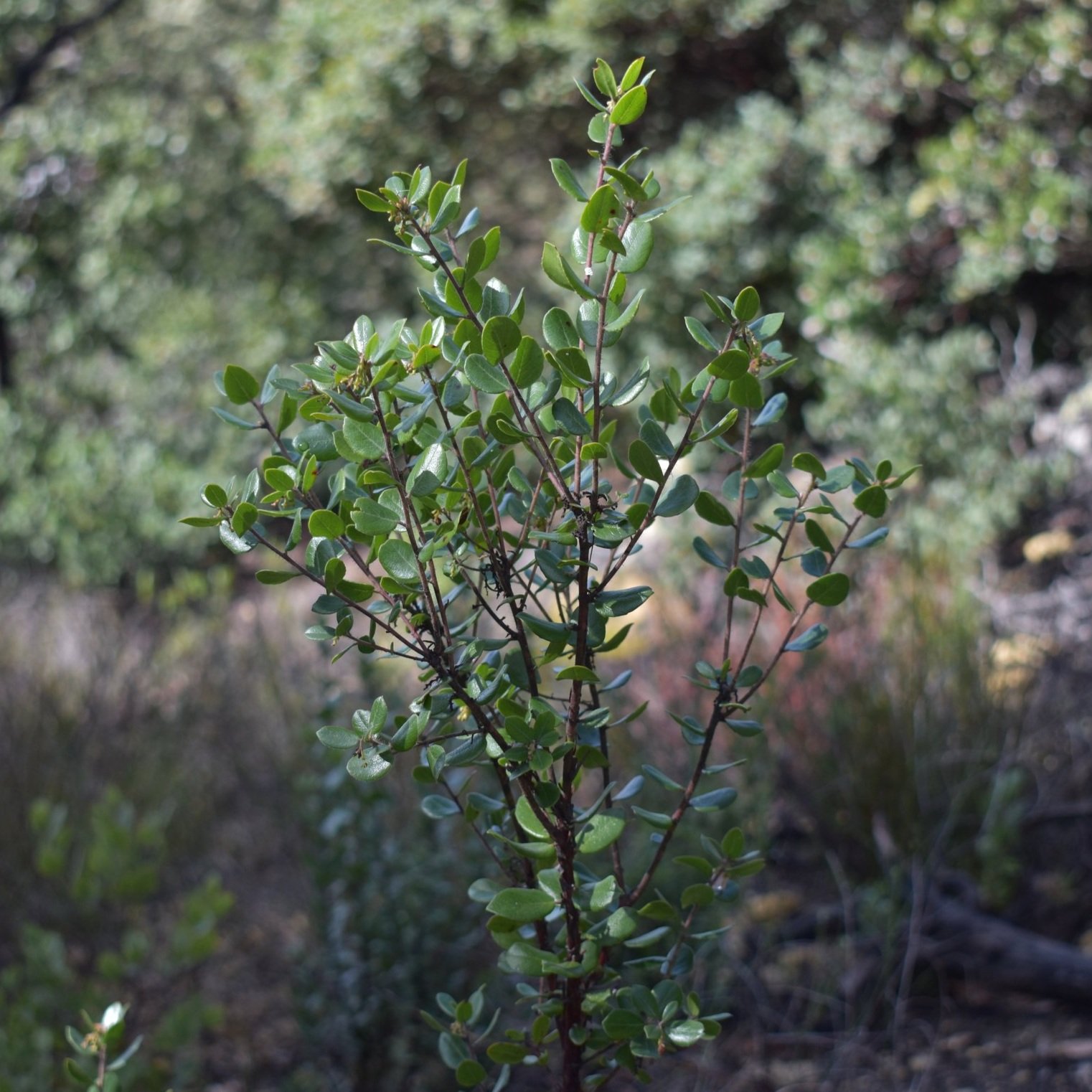Garden Highlight: Manzanita
Delve into the rugged beauty of Manzanita, an iconic shrub that embodies the resilience and diversity of native Californian landscapes.
Manzanita Unveiled: A Testament to Natural Beauty and Strength Manzanita, known for its distinctive red bark and twisting branches, is a key species in California's natural habitats. Comprising over 60 species, these evergreen shrubs or small trees are celebrated for their unique appearance, drought resistance, and ecological value. Manzanitas' bell-shaped pink or white flowers and smooth, mahogany-colored bark make them a striking choice for naturalistic and water-wise gardens.
Growing Essentials: Cultivating Manzanita in Your Garden
Seed Starting/Planting: Manzanitas are best planted as container-grown plants from nurseries. They can be tricky to start from seed and prefer well-drained soils, often with a preference for native soil without amendments.
Planting in California: Ideal for planting in the fall to early spring. They thrive in various settings, from coastal bluffs to mountainous regions.
Care Requirements: Once established, Manzanitas are extremely drought tolerant. Overwatering and poor drainage are their main adversaries.
USDA Zones Compatibility: Generally hardy in zones 8-10, but this can vary with species.
Maturity Timeline: Flowering typically occurs in winter and early spring, with fruit maturing later in the season.
Plant Type and Frost Tolerance: Varies from low-growing groundcovers to towering trees. Many are frost-tolerant.
Growth Pattern: Notable for their twisting branches and a smooth bark that ranges from reddish-brown to deep mahogany.
Distinctive Features of Manzanita
Recognizable by their striking red bark, which peels away in thin layers, revealing the smooth, fresh bark beneath.
Their small, urn-shaped flowers are a vital nectar source in late winter and early spring, attracting bees and hummingbirds.
Manzanita’s Ecological and Aesthetic Benefits
Environmental Impact: Provides habitat and food for wildlife, including birds and beneficial insects.
Ornamental Value: A favorite in native and drought-tolerant gardens for its unique form, captivating bark, and attractive flowers and fruits.
Fire Resilience: Many species are adapted to survive in fire-prone ecosystems.
Companion Planting and Landscape Use
Beneficial Companions: Pairs well with other California natives like Ceanothus, Salvia, and wildflowers.
Landscape Use: Ideal for creating naturalistic landscapes, erosion control on slopes, and as architectural focal points in gardens.
Harvesting and Appreciating Manzanita: A Native Marvel
Harvesting Techniques: Generally not harvested; best appreciated in the landscape for its year-round beauty.
Propagation: Most effectively propagated by cuttings or by purchasing nursery-grown plants.
Garden Use: A versatile plant for native, xeric, and wildlife gardens. The groundcover varieties are excellent for covering dry slopes.
Overcoming Gardening Challenges: Manzanita Care
Common Challenges: Requires well-draining soil and minimal supplemental water once established. Sensitive to root disturbance and overwatering.
California-Specific Growing Tips: Plant in a sunny location and mimic natural conditions as closely as possible. Avoid heavy pruning.
Manzanita: A Symbol of California’s Wild Elegance Manzanita stands as a testament to the beauty and resilience of California’s native flora. Its year-round interest, ease of care, and environmental benefits make it a cherished choice for gardeners seeking to create a landscape that is both sustainable and visually captivating.






